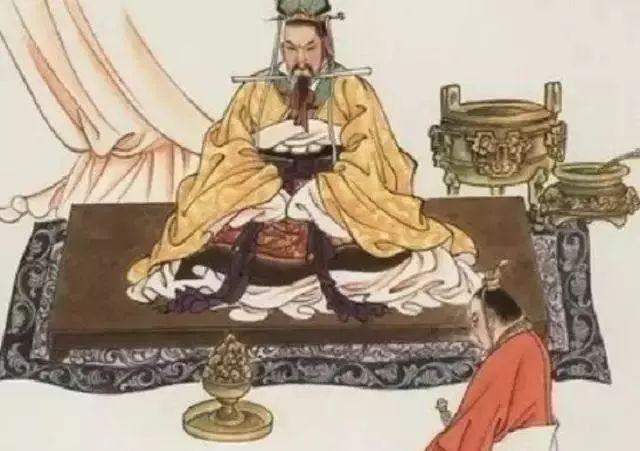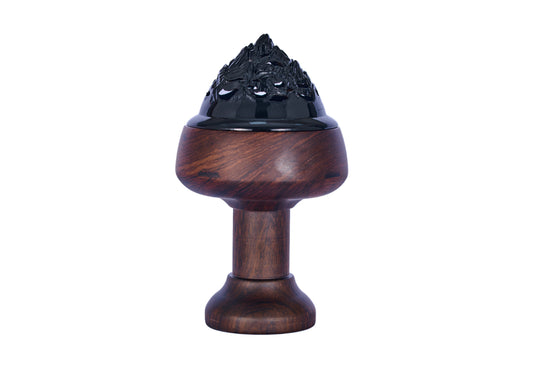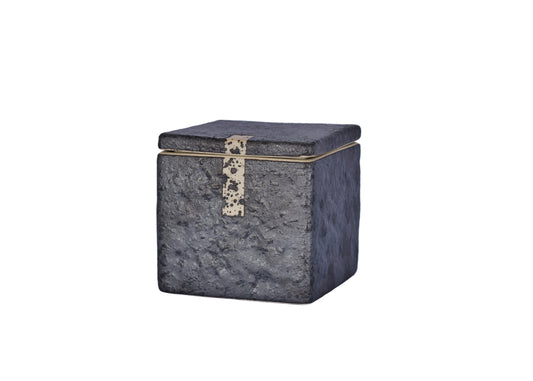
How to Read Incense Smoke: Ancient Chinese Wisdom
Whispers in the Wisp: What Ancient Chinese Incense Smoke Can Tell You About Your Life and Maybe Even Your Future
Whispers in the Wisp: What Ancient Chinese Incense Smoke Can Tell You About Your Life (and Maybe Even Your Future!)
Ever found yourself staring at the swirling tendrils of incense smoke, lost in thought? Maybe you've seen it rise straight and true, or perhaps it's danced in chaotic patterns. What if I told you that for thousands of years, people in China weren't just enjoying the aroma, but actively reading these smoky whispers? They called it "kan xiang" (看香)—literally "watching the incense"—and it was a profound way to tap into something deeper, a cosmic conversation between the earthly and the ethereal.
Now, before you grab your favorite stick and start predicting lottery numbers, let's get one thing straight: this isn't about crystal balls or fortune-telling gimmicks. This is about a rich, ancient tradition, deeply rooted in Chinese history and spirituality, where the ephemeral dance of smoke became a mirror reflecting not just the divine, but also our own inner world. It's a fascinating blend of philosophy, folk wisdom, and a touch of mystical charm.
So, why did our ancestors gaze so intently at these fleeting plumes? What secrets did they believe the smoke held? And how can this ancient art still offer us insights today? Buckle up, because we're about to embark on a journey through time, unraveling the captivating story of incense smoke divination and discovering how a simple wisp can still speak volumes.

From Bones to Burners: The Genesis of Chinese Divination
Our story begins way, way back—think Shang Dynasty, around 1600-1046 BCE. Forget incense for a moment; the OG diviners were all about oracle bones. They'd heat up turtle shells and animal bones, and the cracks that appeared? Those were the universe's way of answering their burning questions. This established a fundamental truth in Chinese thought: the physical world isn't just, well, physical. It's a canvas where the spiritual realm paints its secrets.
As Chinese culture evolved, so did its methods of communication with the divine. The use of incense, initially for its fragrance and as an offering, gradually merged with these divinatory traditions. The earliest forms of incense were made from fragrant grains, and the character for "incense" (香) itself depicts the aroma rising from millet. The act of burning transformed the earthly into the ethereal, a direct line to the heavens. It was only natural that the medium of this message—the smoke itself—would come to be seen as a message in return.
Historical records, such as the Book of Rites (Li Ji), detail the meticulous use of incense in Zhou Dynasty (c. 1046-256 BCE) rituals. These texts underscore the importance of incense in creating a sacred atmosphere and communicating with spirits. The smoke was the bridge, the celestial pathway upon which prayers and intentions traveled. The idea that this pathway could also carry messages back to the mortal world was a logical and intuitive next step.
The Winding Path of Smoke: From Han Dynasty Aromatherapy to Taoist Oracles
By the time the Han Dynasty (206 BCE – 220 CE) rolled around, incense wasn't just for grand ceremonies anymore. It had become a daily essential, a fragrant companion for personal cultivation. Emperor Wu, a man with a serious quest for immortality, popularized the use of various aromatic substances. This era also gave birth to the iconic Boshan Censer (博山爐), an incense burner shaped like mythical mountains, with smoke gracefully curling out, creating a mini landscape of clouds and mists. These censers subtly reinforced the idea that rising smoke was a direct link to celestial realms and spiritual adventures.
It was during this vibrant period, and even more so in the subsequent Wei, Jin, Southern and Northern Dynasties (220-589 CE), that interpreting incense smoke really took off as a divinatory art. As Taoism, China's very own homegrown religion, blossomed, incense became its spiritual heartbeat. Taoists believed that incense smoke was the "Qi" (氣)—that vital life force—that seamlessly connected the human world with the divine. The smoke wasn't just smoke; it was a living, breathing manifestation of the deities themselves. Its patterns, colors, and movements were seen as direct messages, omens, and even divine responses. For a Taoist, incense wasn't just an offering; it was a dynamic, living conduit, a cosmic telephone line where heaven and earth could have a good chat.
"Kan Xiang" in the Wild: Folk Beliefs and Everyday Insights
But "kan xiang" wasn't confined to temples and imperial courts. It seeped into the very fabric of folk beliefs and everyday life. People would light incense at their home altars, in bustling temples, or during lively festivals, all seeking answers to life's big (and small) questions: health, wealth, love, travel. Interpreting the smoke became a common, almost intuitive practice, passed down through generations.
While a definitive "Incense Smoke Dictionary" from ancient China might be elusive, common interpretations definitely emerged from keen observation and shared cultural wisdom. For instance, a steady, upward-rising smoke? That was usually a big thumbs-up from the universe—good fortune, clear communication with the divine, smooth sailing ahead. But if the smoke was scattered, erratic, or even drifting downwards? That might be a cosmic nudge to slow down, indicating obstacles, negative vibes, or a need for some serious introspection.
Some historical tidbits even link incense to the ancient I Ching (周易), that profound book of wisdom. Imagine burning incense while casting yarrow stalks or coins for an I Ching reading. The smoke's dance would then confirm or add layers of meaning to the hexagrams, giving a richer, more nuanced peek into fate.
The "Incense Head": Community Guides and Smoky Wisdom
In many local communities, certain individuals rose to prominence as "xiang tou" (香頭), or "incense heads." These were often respected elders or spiritual gurus with a knack for interpreting the subtle messages in the incense smoke. They'd lead communal rituals, where the collective hopes and prayers of the villagers would ascend with the smoke. Then, the "xiang tou" would interpret the smoke's patterns, offering guidance, predicting future events, and generally being the spiritual GPS for the community. It really shows how "kan xiang" wasn't just a personal journey; it was a shared experience that strengthened community bonds and a collective spiritual understanding.
The Silent Language Across Dynasties: More Than Just Smoke and Mirrors
Throughout the long, winding river of Chinese history, the act of burning incense and observing its smoke was never just a superstitious quirk. It was a profound cultural practice, intricately woven into the very fabric of philosophy, art, and daily life. The symbolism of incense smoke was as rich and multifaceted as a perfectly blended incense stick:
- The Ultimate Divine Messenger: At its core, incense smoke was the original celestial email. It was the bridge, the cosmic WhatsApp, between the human and spiritual realms. Those rising plumes weren't just pretty; they were believed to carry prayers, wishes, and offerings straight to the deities and ancestors, and in return, divine messages could be discerned from its patterns. This profound idea is deeply embedded in the term "incense fire" (香火), which isn't just about the burning stick, but also symbolizes the unbroken continuity of family lineage and spiritual heritage.
- The Ancient Air Purifier (and Evil Spirit Repellent): Long before air purifiers were a thing, incense smoke was on the job. It was seen as a potent agent of purification, used to cleanse spaces, ward off pesky evil spirits, and dispel negative energies. This belief wasn't just plucked from thin air; it was rooted in ancient practices that recognized the medicinal and protective properties of aromatic plants. So, next time you light up, remember you're tapping into millennia of spiritual spring cleaning!
- The Zen Master's Secret: Self-Cultivation and Mindfulness: Beyond its religious and divinatory functions, observing incense smoke became a cherished practice for scholars and literati. This tranquil act, often paired with meditation or a serene tea ceremony, wasn't just a pastime. It fostered inner peace, sharpened the mind, and deepened one's connection to self and nature. This was particularly true during the Song Dynasty (960-1279 CE), often hailed as the golden age of Chinese incense culture, where the appreciation of incense blossomed into a highly refined art form. It was the original mindfulness practice, long before it became a buzzword.
While a definitive, ancient "smoke pattern interpretation guide" might be as elusive as a perfectly symmetrical smoke ring, the general consensus was clear: a clear, steady, and upward-moving smoke was a big cosmic nod of approval—positive omens, divine favor, and a harmonious internal state. But if the smoke was doing a chaotic jig, fragmented, or even drifting downwards? That was usually a sign to hit the brakes, indicating obstacles, disharmony, or a gentle nudge for some serious self-reflection and course correction.
Connecting Ancient Wisdom to Modern Self-Awareness
Here's where it gets really interesting. The ancient practice of "kan xiang" isn't just a dusty relic of the past. It finds a surprisingly compelling echo in contemporary interpretations of incense smoke. While modern perspectives might frame these observations in terms of "energy fields" and "inner states" rather than direct divine pronouncements, the core principle remains uncannily similar: the smoke acts as a profound mirror, reflecting unseen aspects of our being or environment.
Let's take a peek at these fascinating parallels:
| Ancient Interpretation (Kan Xiang) | Modern Interpretation |
|---|---|
| Steady, Upward Arrow: Divine favor, clear communication, good fortune. | The Straight Arrow: Clear mind, strong focus, inner stillness, solid energy. |
| Gentle Spiral: Spiritual growth, unfolding destiny, divine guidance. | The Gentle Spiral: Changing inside, growing stronger, energy flowing and growing. |
| Scattered/Fragmented: Obstacles, disharmony, negative influences. | The Split Path/Fading Trail: Scattered thoughts, low energy, feeling stuck, internal struggle. |
| Downward Drift: Unfavorable omen, need for caution, spiritual blockage. | The Downward Drift: Facing old shadows, deep inner work, healing, energy pulls inward. |
This striking similarity isn't just a coincidence. It suggests a universal human tendency to seek meaning in natural phenomena, especially those as fleeting and captivating as incense smoke. Whether you're viewing it through the ancient lens of divination or the modern lens of mindfulness, the act of observing incense smoke offers a unique pathway to self-reflection and understanding. It transforms a simple, fragrant ritual into a profound, ongoing dialogue, where the silent whispers of the wisp reveal the hidden truths of our world and, most importantly, ourselves.
The Enduring Legacy: Incense as Your Personal Cosmic Compass
The historical journey of "kan xiang" is a powerful testament to the enduring magic of incense in Chinese culture. From its earliest days in sacred sacrificial rites to its sophisticated role in Taoist and Buddhist practices, and its seamless integration into the daily lives of ordinary folks, incense smoke has consistently served as a potent symbol and a practical tool for connection. It's a connection to the divine, to our revered ancestors, to our vibrant communities, and ultimately, to the deepest parts of our own inner selves.
So, the next time you light a stick of incense, remember: you're not just enjoying a pleasant aroma. You're participating in a ritual that has spanned millennia, echoing the intentions and observations of countless generations before you. The smoke, whether you interpret it as a divine message or a gentle reflection of your own energy, continues its silent, mesmerizing dance. It's an invitation to pause, to observe without judgment, and to discover the profound meanings hidden within its ephemeral form. It's your personal cosmic compass, guiding you to a deeper understanding of yourself and the universe around you. So go ahead, light that stick, and let the whispers begin.
Discover More in Monian
Explore our handcrafted incense holders and natural incense collections designed to bring peace and elegance to your space.
Discover Now















